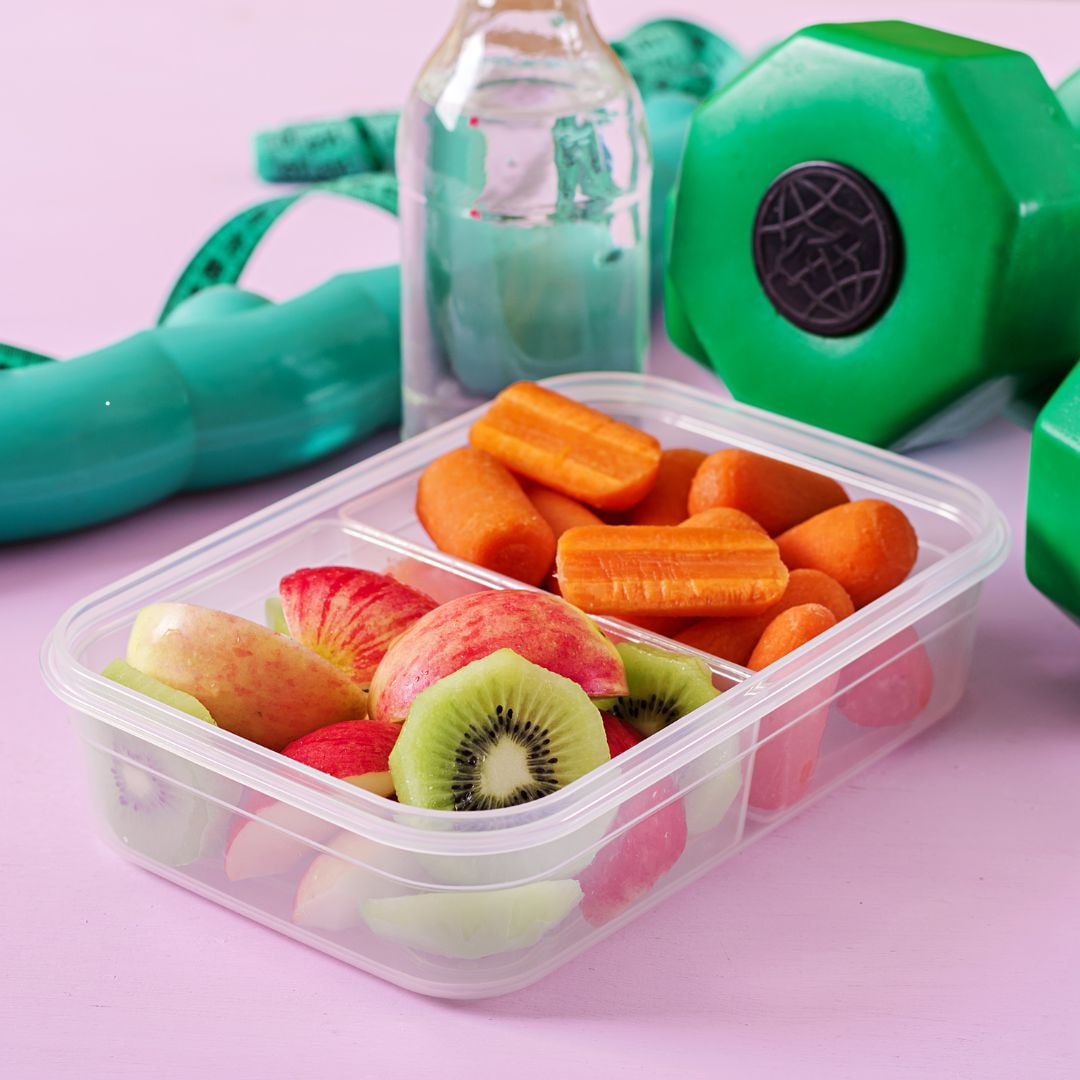The Autoimmune Protocol Diet, or AIP, is a specialized diet designed to help those struggling with autoimmune diseases. It focuses on eliminating foods that could trigger inflammation and harm the immune system while promoting nutrient-dense foods that aid in recovery and balance.
For example, if you are suffering from chronic fatigue or joint pain—common symptoms of autoimmune issues, by transitioning to the AIP diet, you start experiencing reduced symptoms, increased energy levels, and a better quality of life.
At RxFit, with many years of experience in the health and fitness industry, our dedicated team of personal trainers is here to guide you toward achieving your health goals. We recognize the transformative power of the autoimmune protocol diet and are committed to supporting your journey to improved well-being.
Understanding Autoimmune Diseases
Autoimmune diseases occur when the immune system, which is designed to protect you from illnesses, mistakenly attacks your own body. Normally, our immune system knows how to differentiate between self and non-self, but in autoimmune conditions, it goes haywire and starts seeing healthy tissues as threats. This mistaken identity leads to chronic inflammation and damage to various body tissues. It’s like being allergic to yourself
Common Autoimmune Disorders
There are several types of autoimmune diseases out there, and while they may vary in symptoms and severity, they all share the common thread of immune system dysfunction.
Some well-known ones include:
- Rheumatoid Arthritis, which affects the joints
- Type 1 Diabetes which targets insulin-producing cells in the pancreas
- Hashimoto’s Thyroiditis, which leads to hypothyroidism
- Multiple Sclerosis, which affects the nervous system
- Celiac Disease, which damages the small intestine
- Inflammatory Bowel Disease which is a group of disorders that affect the digestive tract, including Crohn’s Disease and Ulcerative Colitis
Many people who have autoimmune disorders often experience overlapping autoimmune symptoms such as fatigue, chronic pain, and skin issues.
Fundamentals of the AIP Diet
At its core, the autoimmune protocol diet is all about healing through food. Think of it as hitting a reset button for your immune system. The diet focuses on eliminating certain foods that can irritate your gut or cause inflammation while emphasizing those that nurture and repair your body.
Foods to Avoid
When it comes to the AIP diet, you’ll need to say goodbye to some of the usual suspects we love to munch on. This includes:
- Grains
- Dairy
- Eggs
- Legumes
- Nuts
- Seeds
- Nightshade vegetables (e.g., tomatoes, peppers)
- Fruits (e.g., apples, bananas)
- Root vegetables (e.g. potatoes)
- Herbs and spices (e.g., basil, cumin)
These foods have been known to trigger inflammation in some people, and by cutting them out, you give your body a chance to breathe easily and function without unwanted stress.
Foods to Include
So, what’s on the menu? Spoiler alert: it’s not just kale and lettuce! The AIP diet encourages you to pack your plates with:
- Vegetables (excluding nightshades, of course): Leafy greens, broccoli, and carrots
- High-quality meats: Grass-fed beef, free-range chicken, and lean pork
- Fish: Salmon, mackerel, and sardines, rich in omega-3 fatty acids
- Fermented foods: Yogurt, sauerkraut, and kimchi for gut health
- Fresh fruit: Berries, apples, and oranges, packed with vitamins
- Healthy fats: Avocado and coconut oil, great for cooking and nutrition
The Importance of Nutrient Density
Nutrient density is all about getting the most bang for your buck with every bite you take. Foods rich in vitamins, minerals, and antioxidants are essential as they help repair cells and support your immune system. A study suggested that diets high in vitamins, minerals, and antioxidants can significantly reduce inflammation, marking a pivotal step toward managing an autoimmune disease effectively. By focusing on nutrient density, you’re not just filling up; you’re fueling up with everything your body craves to thrive.
Autoimmune Protocol Diet Phases
All set to embark on the AIP journey? It’s divided into two main phases: the elimination phase and the reintroduction phase.
Elimination Phase
The elimination phase is where you start, as it’s all about getting rid of potential trouble-causers. The primary goal here is to remove processed foods that might trigger inflammation or exacerbate your autoimmune condition. By doing this, you’re giving your immune system a nice break and allowing your body to heal from past damage.
Foods to Eliminate
During the elimination diet, you’ll temporarily part ways with foods we mentioned above like grains, dairy, eggs, legumes, nuts, seeds, and nightshades. The list seems long, but it’s only temporary. This step helps your body by reducing overall stress and inflammation, as backed by a study that found that participants experienced decreased inflammation levels by following the elimination phase.
Reintroduction Phase
Once you start feeling a bit like yourself again, it’s time for the cautious and exciting reintroduction phase.
This phase’s main mission is to identify which foods can safely make a comeback to your diet and which should remain off-limits. It’s about learning how your body reacts so you can make healthier choices.
Reintroducing foods is done slowly and one by one to carefully observe any symptoms. Begin with a small amount and gradually increase the portion over a few days. If any adverse reaction occurs, you’ll know it’s time to eliminate that food again. Taking note of these responses helps tailor your diet to suit your unique body’s needs.
AIP and Fitness

Keeping your joints in good shape is essential for staying fit and active. Think of your joints as the gears that keep your body running smoothly — when they’re in top condition, they let you enjoy everything from a morning run without pain to a virtual workout in your living room. Maintaining joint health ensures you can move freely and enjoy your favorite activities without discomfort.
How Joint Inflammation Affects Physical Activity
Joint inflammation, often experienced as swelling, redness, and pain, can significantly hinder daily movement and overall lifestyle. It’s essentially your body’s natural response to injury or threat, where the immune system goes into overdrive, sometimes targeting even healthy tissues. This overreaction can lead to persistent discomfort and joint damage if not managed properly.
Common Triggers of Joint Inflammation
There are several potential triggers for joint inflammation, ranging from genetic predispositions to lifestyle choices. Common culprits include certain foods that provoke immune responses, chronic stress, sedentary habits, and environmental factors. For instance, consuming foods high in refined sugars and unhealthy fats might unknowingly exacerbate inflammation, worsening joint pain.
How AIP Helps Reduce Inflammation
The AIP diet, tailored to calm your immune system, plays a pivotal role in reducing inflammation through its strategic food choices. By eliminating inflammatory triggers, such as gluten, nightshades, and processed foods, individuals have reported noticeable reductions in joint discomfort. A study demonstrated that adopting diets focused on reducing inflammation, much like the AIP, could lead to decreased levels of inflammatory markers in the blood, offering relief to those with joint issues.
Impact of Reduced Inflammation on Joint Health
When inflammation hits your joints, even the simplest tasks can become challenging, interrupting your fitness routine. Activities that were once a breeze, like walking or cycling, now feel like climbing a mountain. The good news is that addressing inflammation through dietary changes, such as adopting the AIP diet, can help keep you on track.
Fitness Tips for Individuals on the AIP Diet
Sticking to the autoimmune protocol diet doesn’t mean bidding farewell to your workouts. Start with low-impact exercises like swimming or yoga — gentle on your joints yet effective in staying active. Gradually increase your exercise intensity as your body adapts. Pair your workouts with a balanced AIP-approved meal to nourish your body. Remember, consistency and listening to your body are key to a successful fitness journey.
That’s why our team of personal fitness trainers at RxFit is here to offer you personalized training programs that suit your unique needs. We understand the importance of listening to your body and adjusting accordingly, making sure you achieve your fitness goals while on the AIP diet.
So, let’s work together and keep moving towards a healthier, pain-free lifestyle!
Meal Planning and Recipes
Crafting an AIP meal plan involves mixing creativity with some basic meal prep skills. The goal is to line up meals that are not only delicious but also compliant with the AIP guidelines.
Start by planning your grocery list around fresh vegetables, lean protein, and plenty of herbs and spices to keep things exciting. Consider the flavors and textures you enjoy and look for AIP alternatives that will satisfy similar cravings. Planning can make sticking to the diet much smoother.
Breakfast Recipes
Mornings can be delightful with a hearty AIP breakfast. Here are a few that you can try:
- Sweet Potato Hash: A delicious mix of sweet potatoes, greens, and perfectly cooked proteins like chicken or turkey for a nutritious start to your day.
- Berry Smoothie: Blend mixed berries with coconut milk and a scoop of collagen powder for a quick, on-the-go breakfast option.
Both options are designed to energize you while being friendly to inflammation.
Lunch Recipes
Lunchtime gets a makeover with creative salads and bowls.
- Colorful Salad: Combine mixed leafy greens, roasted veggies, and grilled shrimp, all drizzled with a tasty balsamic vinaigrette for a refreshing dish.
- Comforting Chicken Soup: Made with bone broth, which is known for its anti-inflammatory benefits. Research highlights the healing and anti-inflammatory properties of bone broth.
Dinner Recipes
End the day with a satisfying AIP dinner like:
- Roasted Salmon with Herb Salsa: A flavorful dish featuring perfectly roasted salmon topped with a vibrant herb salsa, served with a creamy cauliflower mash.
- Hearty Beef Stew: A comforting stew filled with tender beef and a variety of root vegetables, perfect for a cozy meal.
These dinners are not only filling but also ensure a restful night by supporting your body’s natural healing processes.
Snack Ideas
Snacking on the AIP diet doesn’t have to be boring!
- Veggie Sticks with Homemade Guacamole: A crunchy, nutritious snack that’s perfect for dipping.
- Refreshing Fruit Salad: A mix of fresh fruits topped with coconut flakes for a tropical touch.
- Beef Jerky: A protein-packed option made from grass-fed beef, seasoned with AIP-friendly spices.
These snacks help satisfy your hunger while aligning with your dietary needs.
Overcoming Challenges on the AIP Diet
You’ve got the AIP basics down and some tasty recipes to try, but what about the bumps you might hit along the way?
Common Challenges and Solutions
Switching to the AIP diet can feel overwhelming initially, but understanding common challenges can ease the transition. A frequent hurdle is feeling restricted by what you can eat. To combat this, think of it as an adventure in discovering new foods and flavors.
Another challenge is social situations; meal prep and bringing your own dishes can ensure you always have an AIP-friendly option. Additionally, combatting cravings might require finding satisfying AIP alternatives to your favorite foods—like a coconut milk ice cream when you miss dessert. Engaging with AIP communities online, such as Autoimmune Wellness, can also provide support and fresh ideas.
Dining Out on the AIP Diet
Eating out while sticking to the autoimmune protocol diet can seem tricky, but it’s definitely doable with some foresight. Research restaurants ahead of time and check their menus online for AIP-compatible dishes.
Don’t hesitate to ask servers about ingredients or request modifications to meals. Many restaurants will accommodate your dietary needs once they understand your dietary needs. Opt for simple dishes like grilled meats and vegetables, and skip the sauces unless you know they are AIP-friendly. This approach minimizes stress while allowing you to enjoy social meals.
Staying Motivated and Consistent
Staying committed to any diet requires motivation, and AIP is no different. Set realistic goals and keep track of your progress to celebrate small victories. Another great way to stay motivated is by reminding yourself of how much better you feel—both physically and mentally—compared to before starting the diet. Lastly, make sure to keep your meals varied and exciting to prevent dietary boredom.
Final Thoughts
Navigating the autoimmune protocol diet and maintaining a fitness routine can initially seem challenging, but it’s all about finding balance and what works best for you. Remember, it’s a lifestyle change, not a quick fix, so take things one step at a time. Celebrate your progress and enjoy the journey to a healthier you. By incorporating a variety of delicious AIP recipes and staying active, you’re supporting your body’s healing process in the best way possible.
You don’t have to worry about your AIP and fitness journey, as RxFit personal fitness trainers are skilled at creating customized training programs tailored specifically to your needs. We are happy to guide you through the process, providing support and motivation every step of the way. Whether you’re just starting or seeking new ideas to enhance your routine, we’re here to help you succeed.


